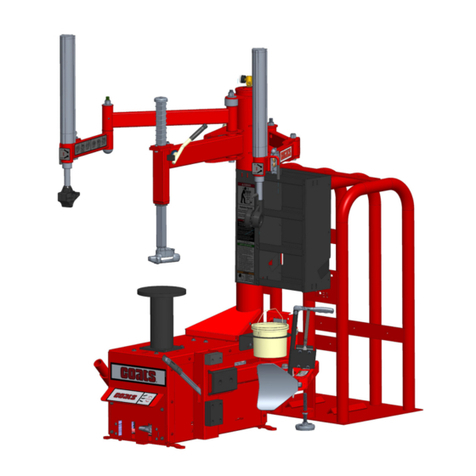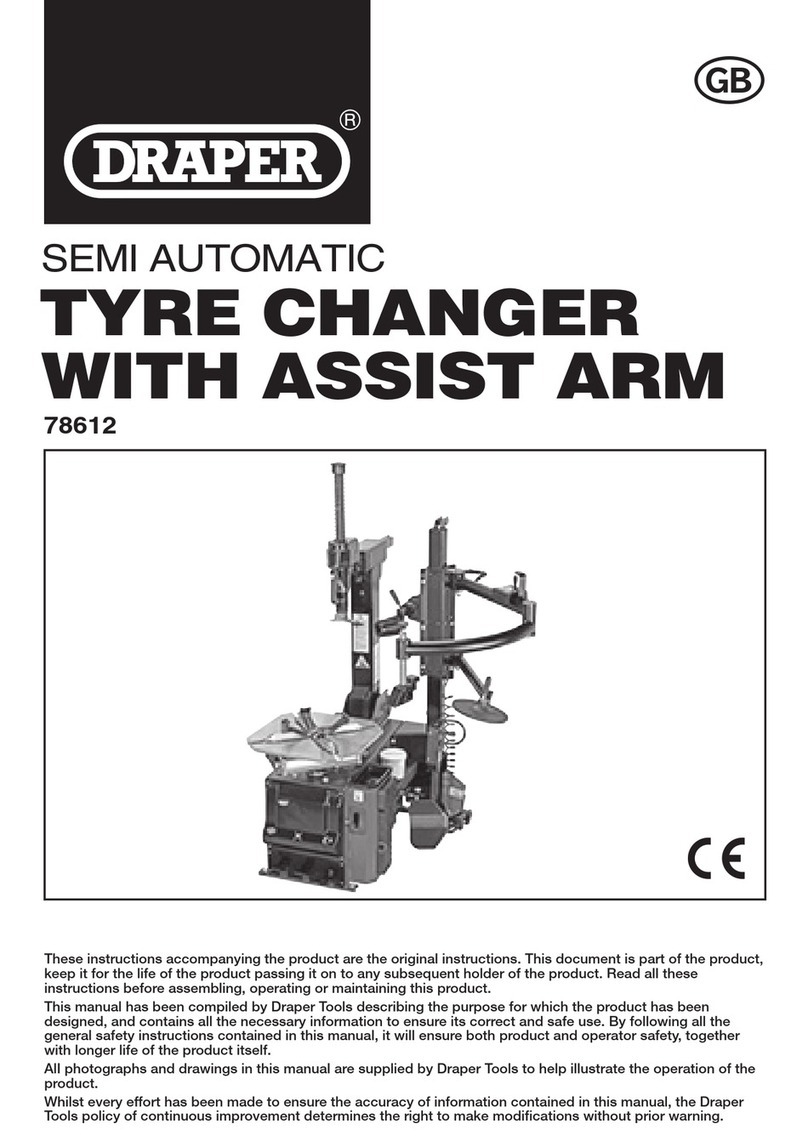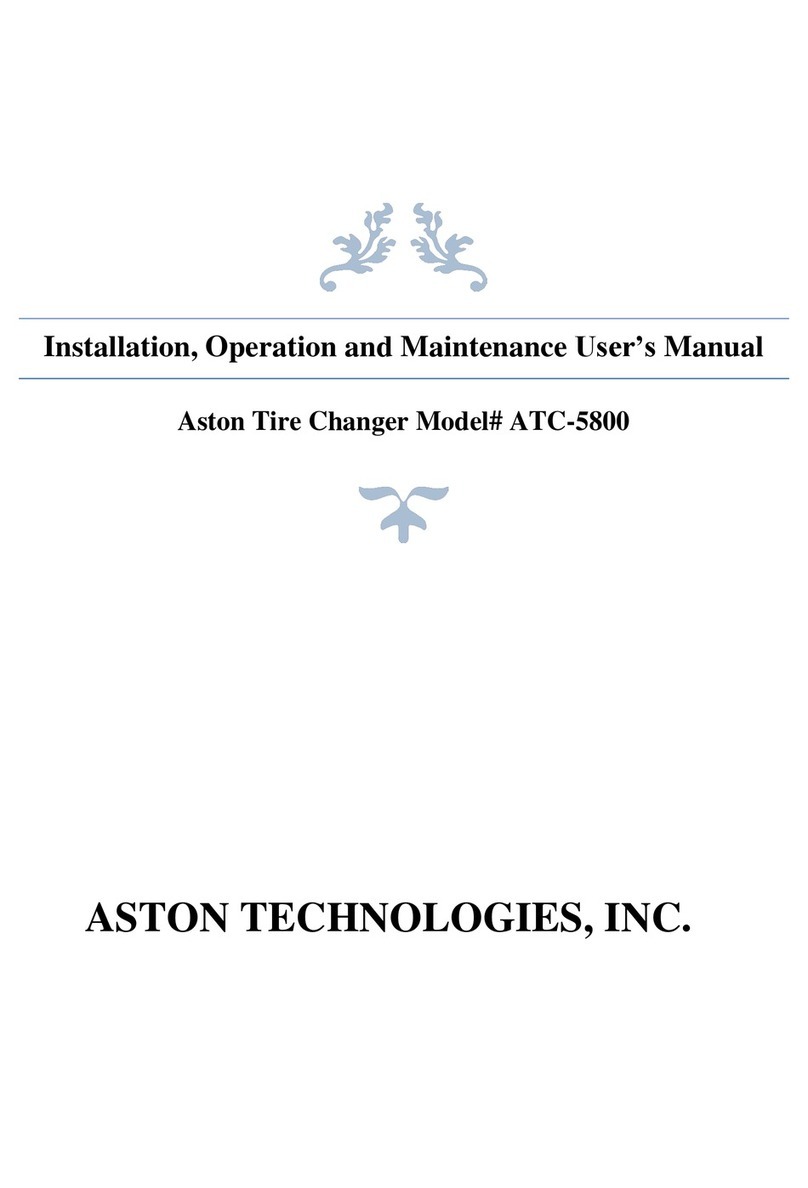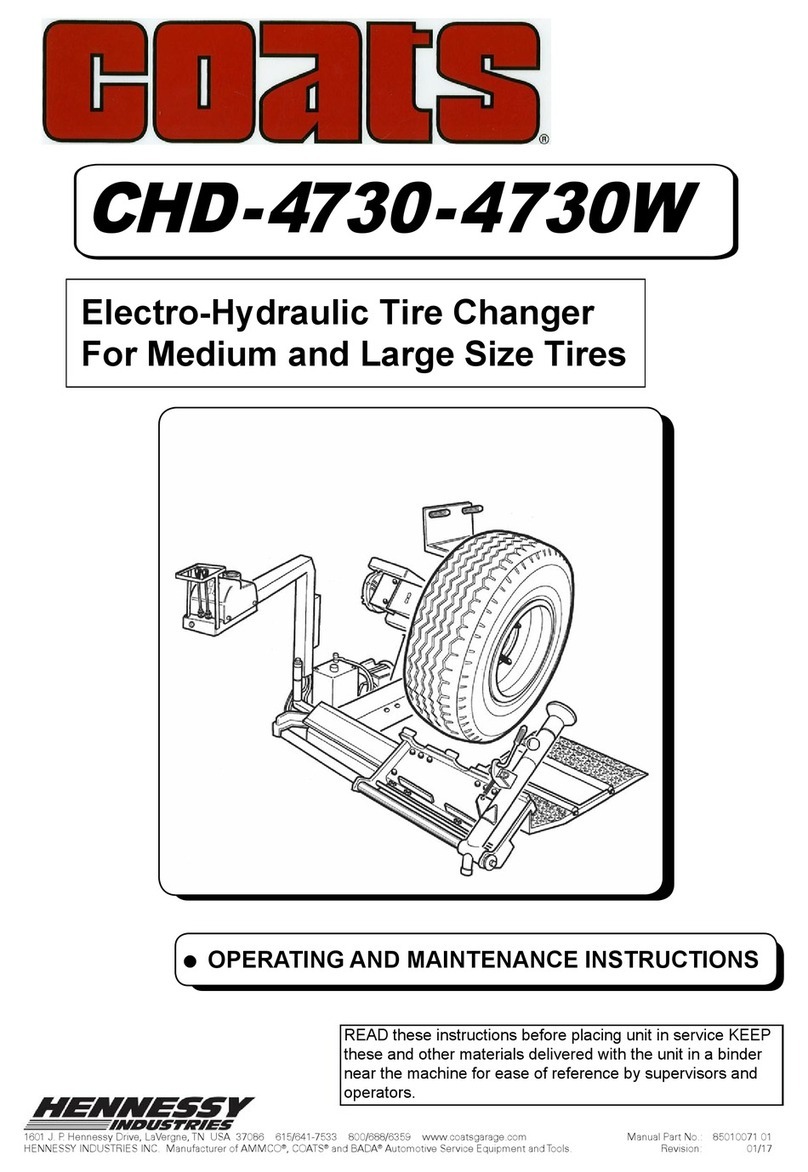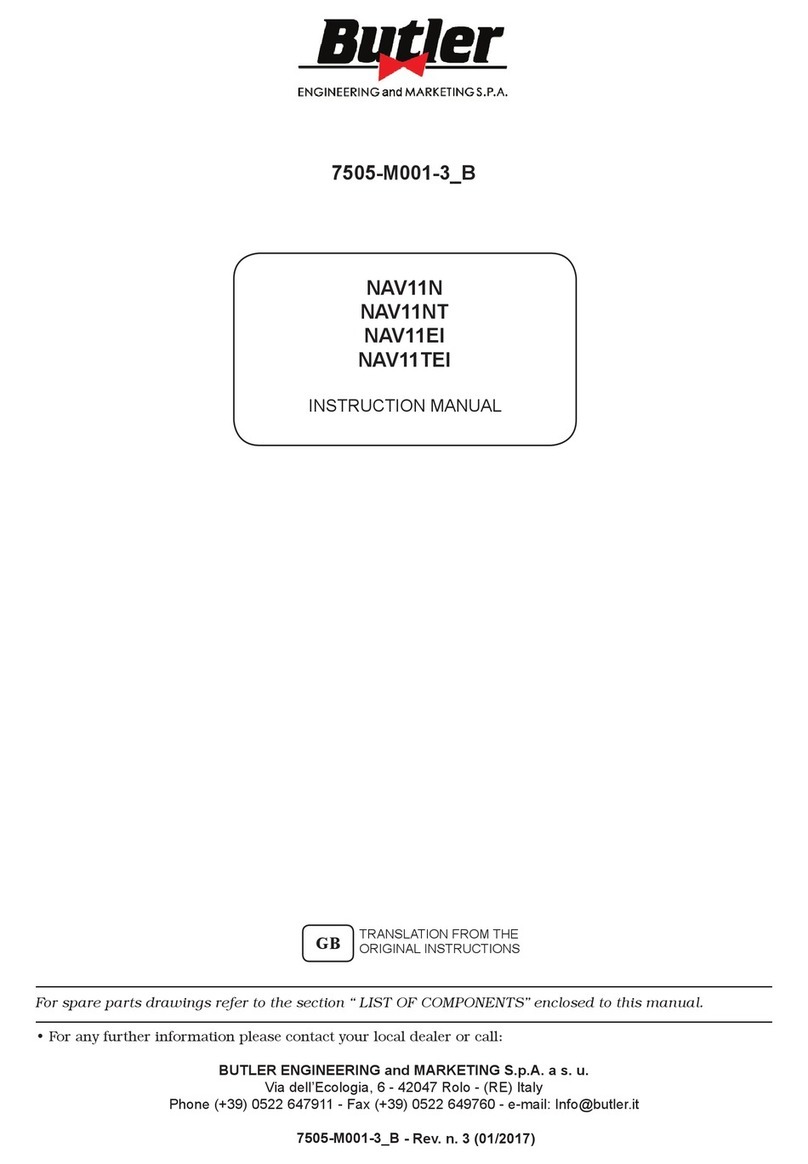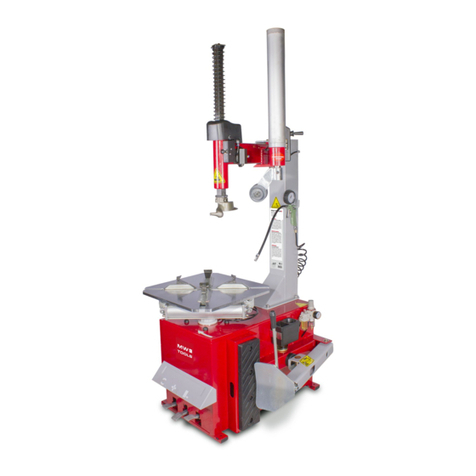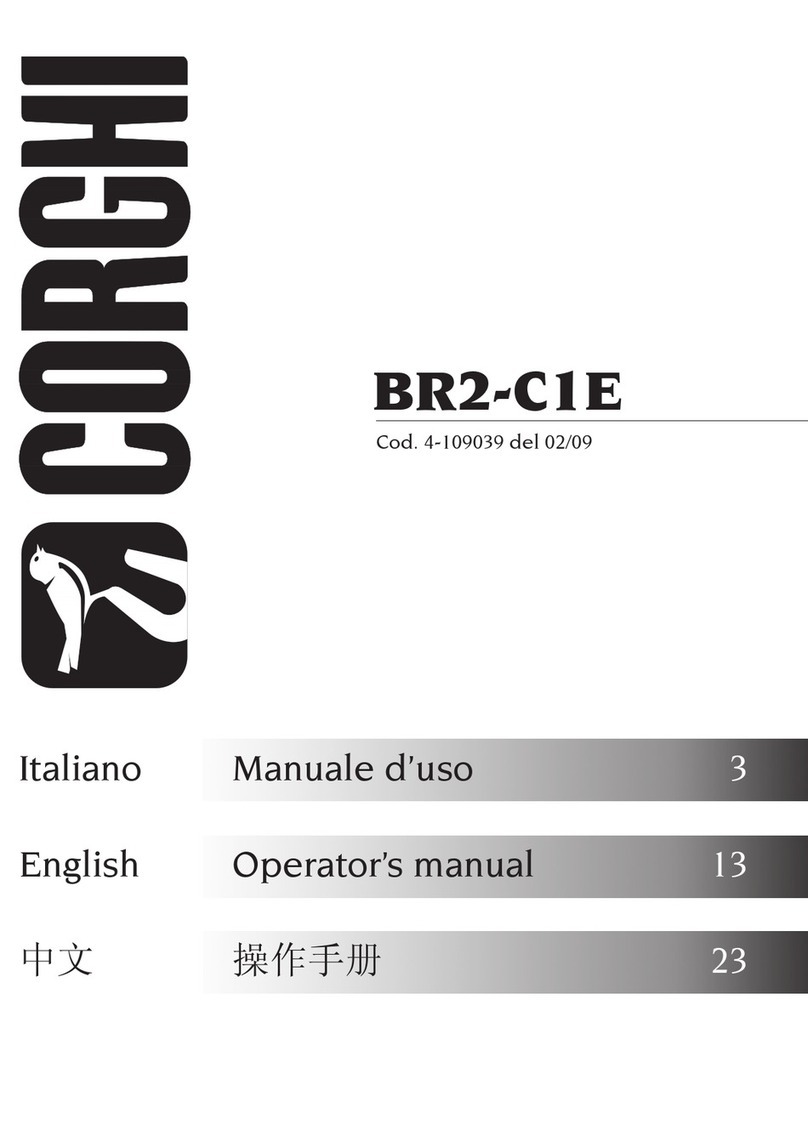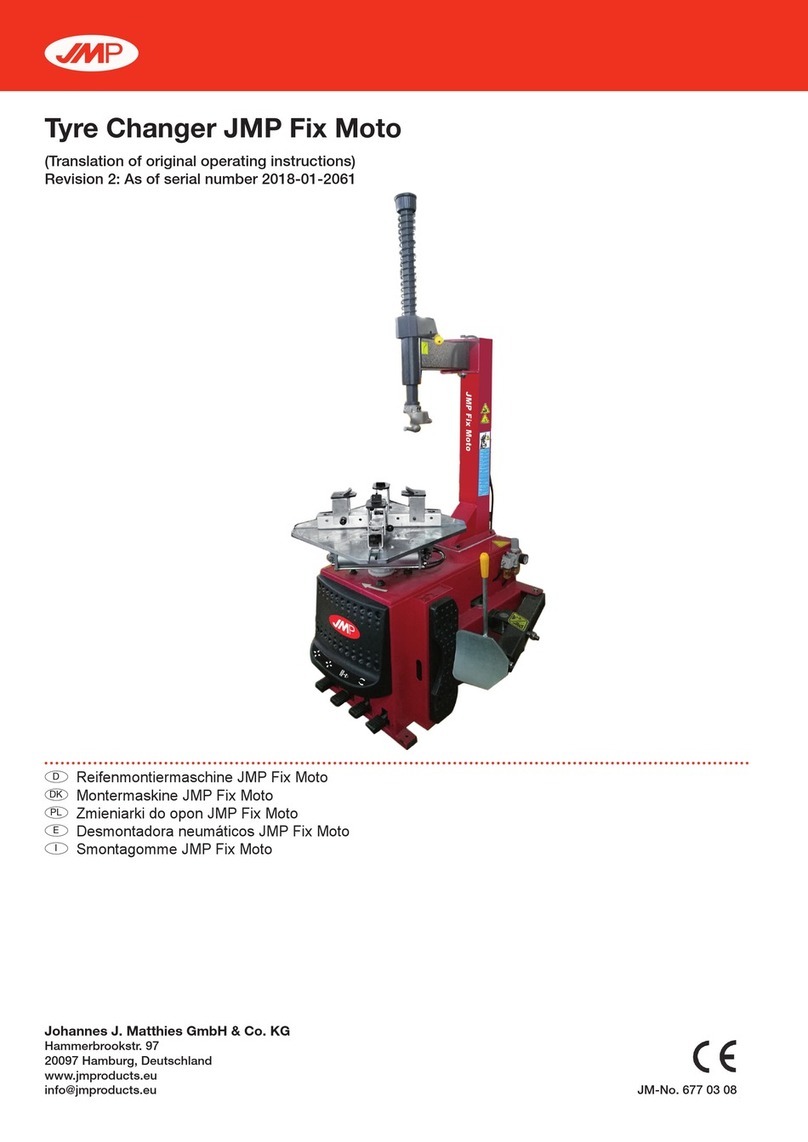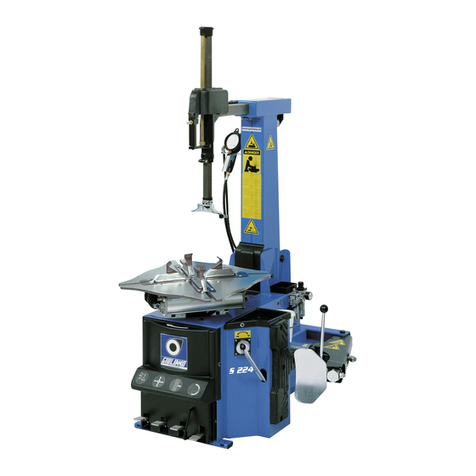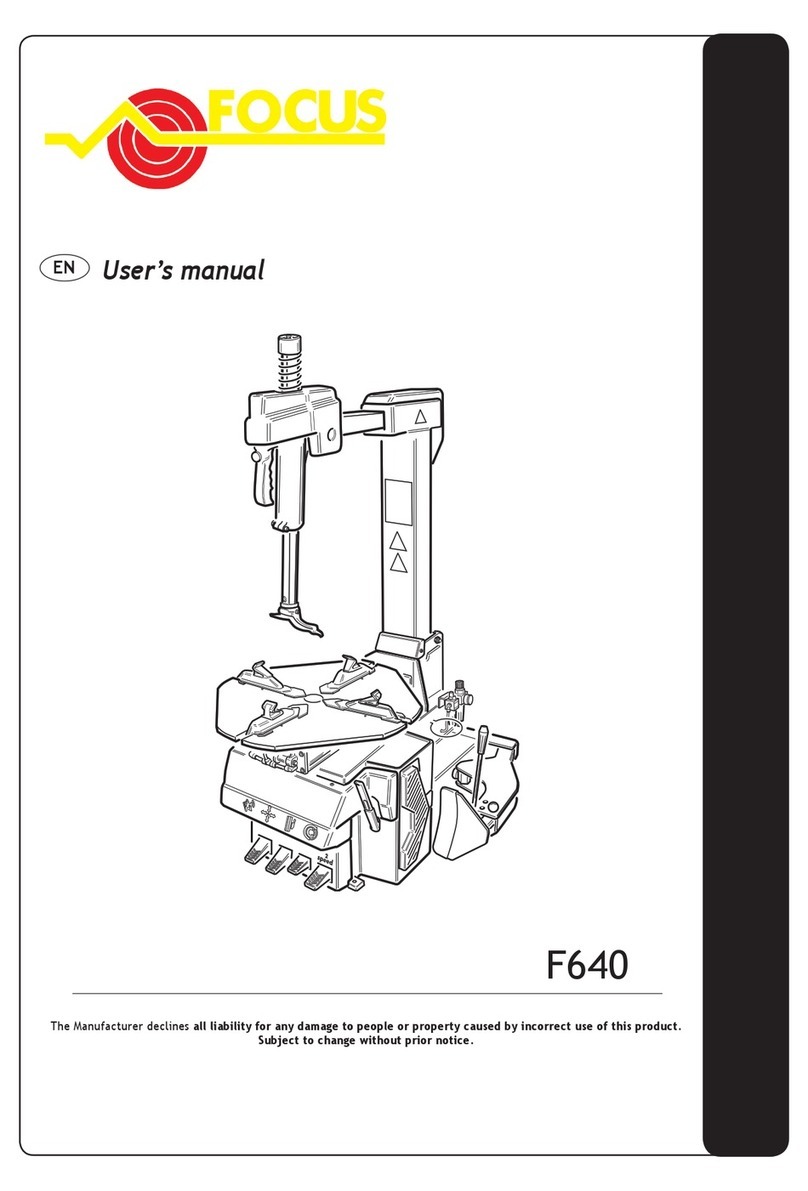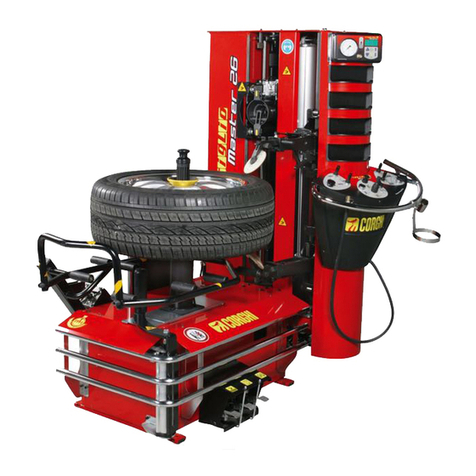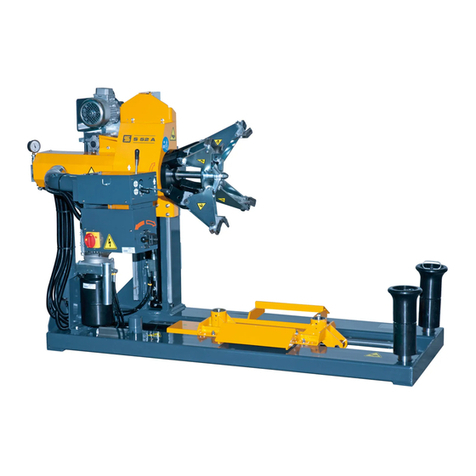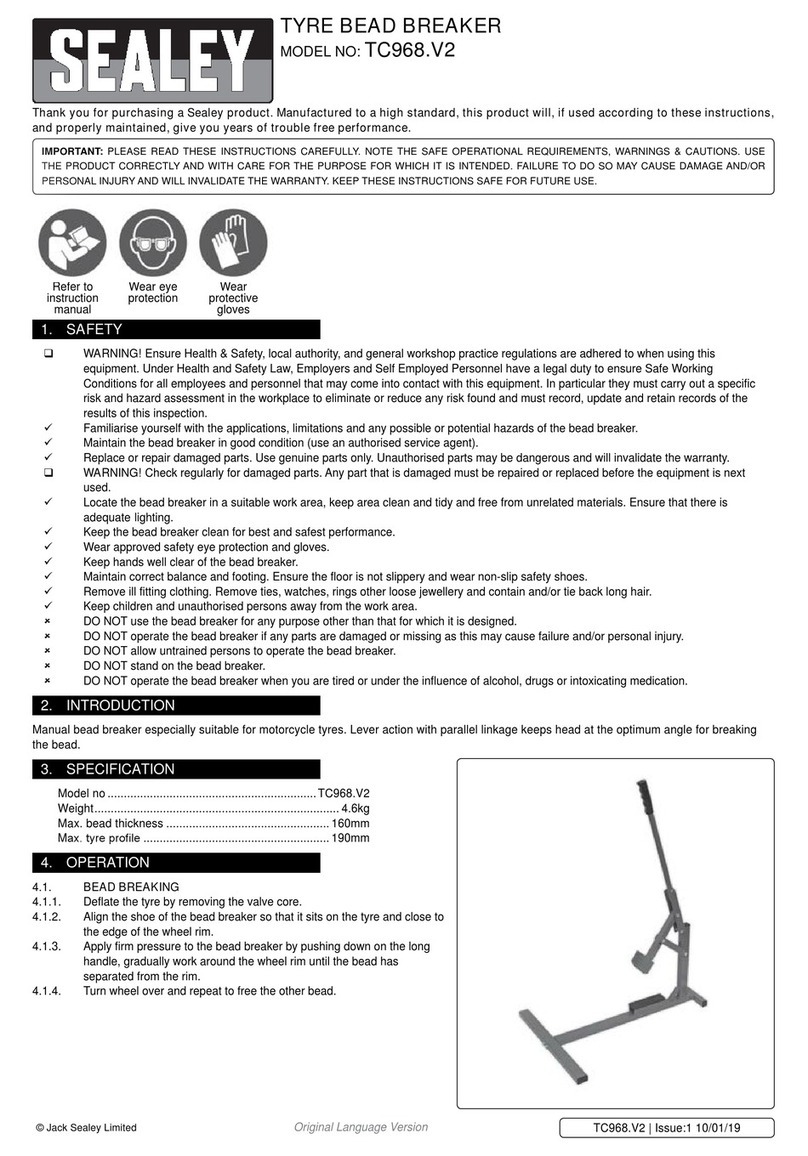EN - 5
INSTRUCTIONS: Safety Label Meanings
IMPORTANT!! SAVE THESE INSTRUCTIONS
Overinflated tires or tires mounted on the wrong sized rims can explode producing hazardous fl
ying debris.
• Read and understand the operation instructions before using this tire changer.
• Never mount tire on rim with different sized diameter.
• Never exceed maximum in"ation pressure listed on tire sidewall.
• Always use safety restraint arm to hold wheel in place while in"ating.
• Always use attached air hose to in"ate tires.
Exploding tires can cause death or serious injury.
Risk of electrical shock.
• Do not operate equipment with a damaged power cord or if the equipment has been dropped or damaged,
until it has been examined by a quali#
ed service person.
• If an extension cord is necessary, a cord with a current rating equal to or greater than that of the equipment
should be used. Cords rated for less current than the equipment can overheat.
• Unplug equipment from electrical outlet when not in use. Never use the cord to pull the plug from the outlet.
Grasp plug and pull to disconnect.
• Do not expose the equipment to rain. Do not use on wet surfaces.
• Plug unit into correct power supply.
• Do not remove or bypass grounding pin.
Contact with high voltages can cause death or serious injury.
Risk of electrical shock. High voltages are present within the unit.
• There are no user serviceable items within the unit.
• Service on the unit must be performed by quali#ed personnel.
• Do not open any part of the unit other than noted and allowed areas.
• Turn power switch off and unplug the unit before servicing.
Contact with high voltages can cause death or serious injury.
Risk of crushing.
• Become familiar with all controls before proceeding with operation.
• Stand away from the bead breaker arm when in operation.
• Apply air to breaker in bursts if necessary to control arm depth.
• Don’t allow to approach extraneous people to the service.
Contact with moving parts could cause injury.
Risk of pinching or crushing hands and fingers.
• Keep hands and #ngers clear of rim edge during demounting and mounting process.
• Keep hands and #ngers clear of mount/demount head during operation.
• Keep hands and other body parts away from moving surfaces.
• Do not use tools other than those supplied with tire changer.
• Do not use unapproved accessories
• Do not bypass any safety features.
• Use proper tire lubricant to prevent tire binding.
Contact with moving parts could cause injury.
Risk of eye injury. Debris, dirt, and fluids may drop from wheels.
• Remove any debris from tire tread and wheel surfaces.
• Remove excess tire lubricant before in"ating.
• Knock off any loose debris. Clean surfaces as needed to avoid any materials from falling.
• Wear approved safety glasses during mount and demount procedures.
Debris, dirt, and fluids projection can cause serious eye injury.
Risk of injury. Tools may break or slip if improperly used or maintained.
• Use the correct tool for the task.
• Frequently inspect, clean, and lubricate (if recommended) all tools.
• Follow recommended procedures when performing wheel services.
Tools that break or slip can cause injury.
Collision and dragging hazard:
• do not rotate the turntable without wheel on board
• do not approach the turntable plate while it is moving
• pay attention to the jaws when these stick out of the turntable plate
• do not place any protruding objects on the turntable plate
• do not place any protruding objects near the turntable plate
Contact with moving parts could cause injury.
